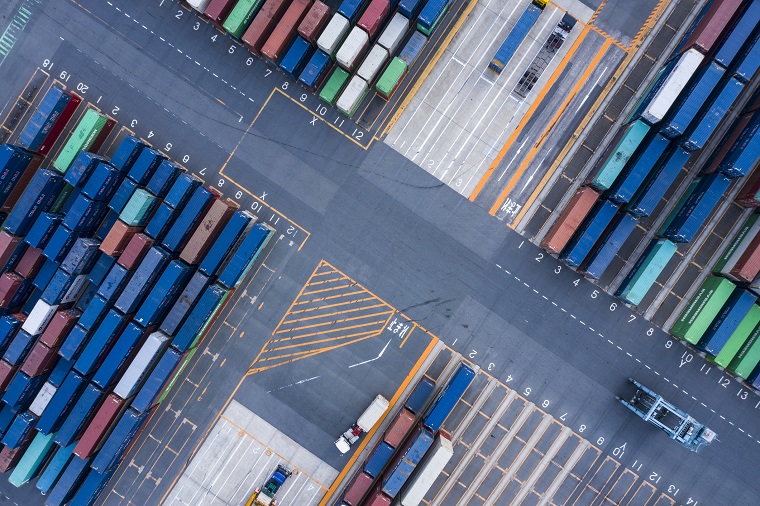Australian suppliers can now be required to register for VAT in every EU member state to which goods are delivered following changes to the EU rules on 1 July 2021. Steps are required to preserve solutions which were valid previously for all commercial goods.
How does this impact Australian businesses?
Online marketplaces –
For supplies of goods via an independent electronic interface (eg Amazon, eBay, Etsy, etc), accounting for EU VAT liabilities is now the responsibility of the website rather than the supplier. The circumstances are limited, including a €150 threshold, but it is a great advantage for many smaller suppliers.
Single filing process for online sellers – Australian sellers can choose to collect VAT on goods under €150 and declare this under a single ‘Import One-Stop-Shop’ (IOSS). Under the IOSS, the supplier charges VAT to the EU customer at the point of sale and reports and pays this VAT on a single IOSS return. Australian sellers will need to appoint a member state of identification for filing purposes. This is useful for goods imported into the EU, but there are limits of €150 on consignments.
Non-union One Stop Shop – This sounds like a solution for Australian suppliers who are outside the EU, but it only applies to services.
Possible solutions?
Example 1: customer responsible
Businesses should consider the simpler, more affordable solutions first. This would be to ignore the new rules and make EU customers responsible for the VAT on imports into the EU.
Example 2: internet sales I
As online sales continue to increase, it will be welcomed that supplies of goods via an independent online marketplace (known as electronic interfaces in EU legislation) have become the VAT responsibility of the online marketplace itself. This will include sales via Amazon, eBay, Etsy and so on.
This is an excellent solution for non-EU suppliers. Not only can they zero-rate the exports of their goods, recovering VAT on attributable purchases as they do so, but they also have no VAT requirements to meet on their sales.
There are limits however. Consignments of goods entering the EU are limited to €150; and sales will still have EU VAT liabilities and other costs deducted before the balance is paid to the supplier. The impact of this EU VAT being deducted from sales is only appreciated when it is understood that standard rates of VAT in the EU vary between 17% and 27%, which can make the difference between a profitable and a loss-making market.
Example 3: internet sales II
Many non-EU suppliers will have supply chains which cannot benefit from the solution in example 2. The supplier will instead be responsible for the EU VAT on their sales into the EU. This will include paying EU import VAT in each member state where the goods arrive and paying VAT on each sale of goods there.
Given the nature of the internet, this often results in a few sales in many EU member states, each with an expensive requirement to register and account for VAT. For these smaller suppliers, there is the IOSS. This solution removes EU import VAT and allows the VAT on sales (payable in every EU member state of delivery) to be accounted for in just one EU member state, which will be the supplier’s choice.
There are however several drawbacks, the main one is the limit to consignments valued at €150 or less. Sales above this limit risk triggering additional VAT registration requirements for the supplier. The advantage for those making small supplies is that the supplier only registers in one EU member state and can choose where to register, whether for reasons of language, geographic convenience, ease of communication with the tax authorities, or any other reason.
Example 4: drop-shipping
Drop-shipping is where a supplier purchases goods from one country and arranges for them to be delivered in another. Popular with online suppliers, it risks incurring a liability to register for VAT in every EU member state where the goods are delivered. It is a risk that can be managed using the Union One Stop Shop, but action is required to avoid unexpected liabilities arising.
Example 5: adjusted supply chain
An alternative to the IOSS, which is likely to be a limited solution for non-EU suppliers, is for the supplier to declare the goods for import in a single EU member state while the goods are transported on to their destination. This will require the supplier to register for VAT in that single member state and for a Union One Stop Shop registration, but then the EU VAT requirements can be fulfilled completely.
There are drawbacks. The goods must physically enter the EU member state before they can be declared for import there, limiting transport routes. Discussions are therefore required to ensure the chosen route can be fulfilled by the transporter and to determine non-VAT factors such as any additional charges or time delays. However, this solution is scalable and flexible.
Example 6: real world - goods
In practice, businesses grow unsteadily, with multiple different outlets and supply chains. Different solutions will be appropriate at different stages of a business’ growth, perhaps beginning with passing VAT responsibilities for small initial sales into the EU onto customers and online marketplaces. Sales should be monitored, however, and when it is predicted that consignments will exceed Euro 150 or that customer dissatisfaction will become too great, wider solutions will be explored. An IOSS might seem attractive if demand requires that goods are not delayed when delivered to EU customers, but the adjusted supply chain (example 5) is a complete solution, encompassing B2B and B2C supplies (whether imported into the EU, or drop-shipped within the EU, or sales using the margin scheme), while leaving the supplier in control of imports and avoiding customer dissatisfaction.
Difficulties for the supplier are not eliminated by the adjusted supply chain: there are additional expenses, lead times to have registrations in place, and communication with customers, transporters and specialists. Suppliers will also be considering how to show prices inclusive of EU VAT and devising systems to distinguish between supplies where they are responsible for VAT and where they are not.
Action required
Australian businesses trading with EU customers should review their supply chains.
The new rule changes make it easier for small suppliers to trade with EU customers via online marketplaces. For other suppliers, the changes only make it more challenging, but solutions exist. The risk is that the supplier will be required to register for VAT in each EU member state where goods arrive. Precise steps are actively required to avoid the worst of these new burdens.
Which solution is appropriate for a supplier will be determined by the supplier’s supply chains and a cost-benefit balance. To discuss your case further please contact Paula Tallon ptallon@prosperity.com.au.



